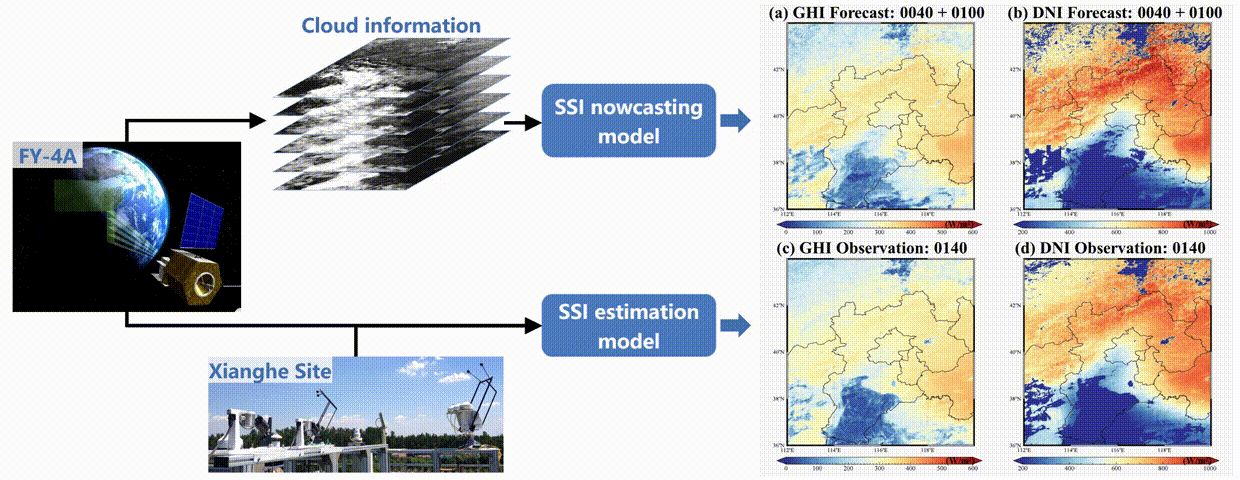A profound transformation of China’s energy system is required to achieve carbon neutrality. This means that solar and wind power will play unique roles as renewable energy sources become more prevalent.
Solar energy generation highly depends on weather conditions. Therefore, energy input experiences strong and frequent fluctuations. Thus, grid operators cope with solar energy intermittency with battery storage systems and future load forecasts over various timescales, including the very near term, or "nowcasting".
Using the existing Fengyun-4A satellite and the wealth of weather data that it provides, scientists from the Institute of Atmospheric Physics, Chinese Academy of Sciences (IAP, CAS) and collaborators from Harbin Institute of Technology (HIT) and National Satellite Meteorological Center (NSMC) created a nowcasting system for surface solar irradiance (SSI). The team published their developments in Advances in Atmospheric Sciences.
"Fengyun-4A (FY-4A), part of the newest generation of Chinese geostationary satellites, provides a new measurement for solar energy monitoring with high resolution." said GAO Ling from NSMC.
Prof. XIA Xiangao, the corresponding author from IAP, CAS further elaborated that the system is composed of two key components that allow the system to provide solar energy forecasts, under different sky conditions, within a 3-hour lead time.
"The first of which is a hybrid SSI estimation method combining a physical clear-sky model and an empirical cloudy-sky model." said XIA. "The second part is the SSI nowcasting model deriving the cloud motion vector (CMV) using the block-matching method."
To further investigate the system's accuracy and applicability, the researchers evaluated its performance under different sky conditions observed in the North China region.
Schematic diagram of the Fengyun-4 geostationary satellite-based solar energy nowcasting system (Diagram by HUANG Chunlin)
"We found that the spatiotemporal distribution of SSI forecasts is very close to ground observations." said HUANG Chunlin, a PhD candidate and collaborator from HIT. "The discrepancy of SSI estimates depend on cloud occurrence frequency and a seasonal pattern is apparent."
The data from FY-4A along with this new nowcasting system has great potential to promote photovoltaic energy systems development and to reduce carbon emissions across China.
"For the next step, we will improve the applicability of the SSI estimation model considering different regions and seasons in China, and apply the formation and dissipation process of clouds." said YUAN from HIT.
Reference:
Huang,C.L. and coauthors. 2022: Fengyun-4 Geostationary satellite based solar energy nowcasting system and its application in North China. Adv. Atmos. Sci., https://doi.org/10.1007/s00376-022-1464-0.
Media contact: Ms. LIN Zheng, jennylin@mail.iap.ac.cn

